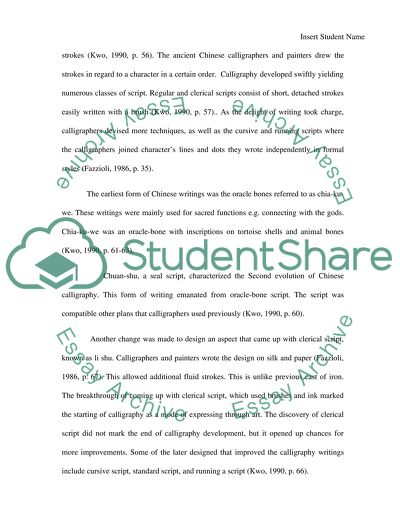Cite this document
(“Chinese Brushwork in Calligraphy and Painting Essay”, n.d.)
Chinese Brushwork in Calligraphy and Painting Essay. Retrieved from https://studentshare.org/visual-arts-film-studies/1399771-chinese-brushwork-in-calligraphy-and-painting
Chinese Brushwork in Calligraphy and Painting Essay. Retrieved from https://studentshare.org/visual-arts-film-studies/1399771-chinese-brushwork-in-calligraphy-and-painting
(Chinese Brushwork in Calligraphy and Painting Essay)
Chinese Brushwork in Calligraphy and Painting Essay. https://studentshare.org/visual-arts-film-studies/1399771-chinese-brushwork-in-calligraphy-and-painting.
Chinese Brushwork in Calligraphy and Painting Essay. https://studentshare.org/visual-arts-film-studies/1399771-chinese-brushwork-in-calligraphy-and-painting.
“Chinese Brushwork in Calligraphy and Painting Essay”, n.d. https://studentshare.org/visual-arts-film-studies/1399771-chinese-brushwork-in-calligraphy-and-painting.


